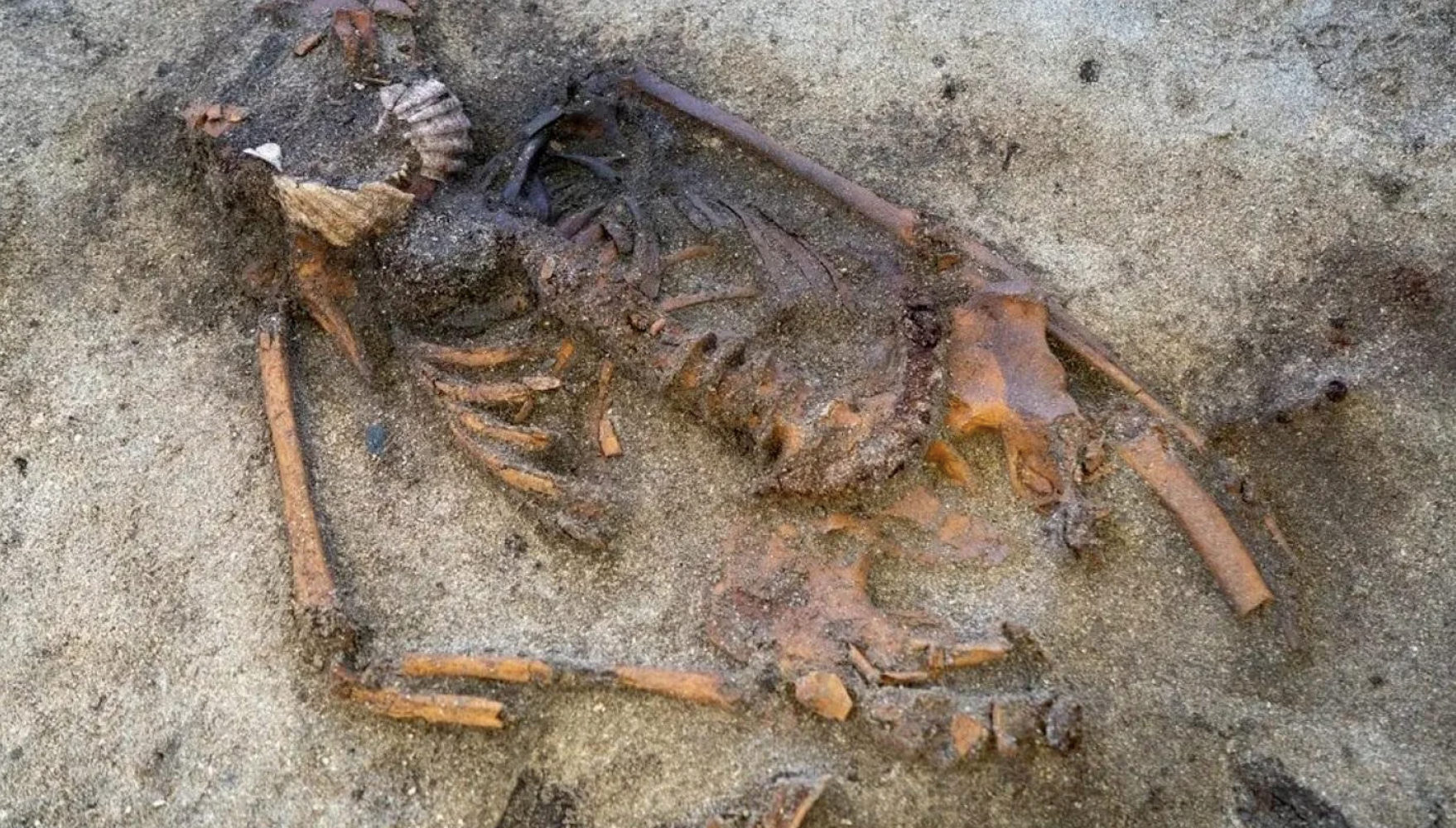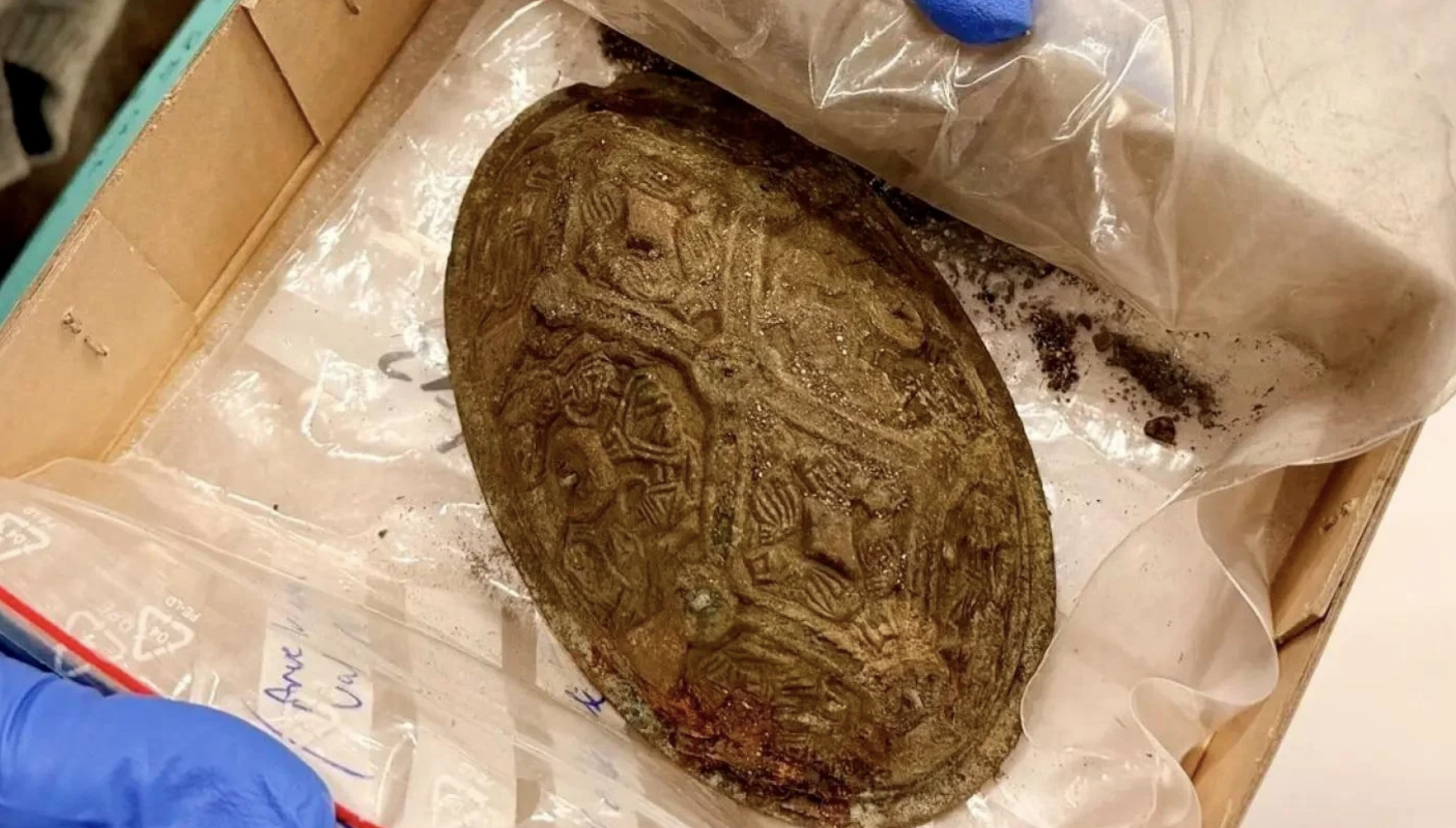Mystery Viking Burial in Norway Reveals Unique Ritual Using Scallop Shells!
Every now and then, a completely ordinary moment leads to an extraordinary discovery. That’s exactly what happened in central Norway, where a casual sweep of a metal detector revealed one of the most intriguing Viking Age burials found in recent years.
The story begins at Val in Bjugn, where hobby detectorist Roy Søreng stumbled upon an oval brooch earlier this year. At first glance, it looked like a typical 9th-century brooch, the type usually worn by Viking women to fasten the straps of their apron dresses. But Søreng knew the significance of what he’d found, and his report quickly brought archaeologists from the NTNU Science Museum and Trøndelag County Council to the site. It didn’t take long before they realised the brooch was just the start of a much larger story.
Hidden beneath the soil was an exceptionally well-preserved grave belonging to a woman from the Viking Age. She had been buried in full dress, complete with two oval brooches at her chest and a smaller ring brooch from her underdress. The quality of the jewellery, along with the good condition of her remains, suggests that she was a free woman, married, most likely, and perhaps someone of some standing within her local farming community.
But what truly set her burial apart was something far more unusual.
Across her mouth, archaeologists found two scallop shells placed like a protective cover, curved sides facing outwards, straight edges meeting in the middle. This practice hasn’t been documented in any other Norwegian grave from the period, leaving experts baffled. Were the shells symbolic? Protective? Part of a local tradition that has simply never been recorded?
Adding to the mystery, small bird bones, mainly wing bones, had been placed along the length of the grave in a deliberate arrangement. Their purpose is equally unclear, but together with the shells, they hint at a ritual with deep cultural meaning.
The excavation itself had to be carried out quietly and quickly. The grave lay in farmland and was in immediate danger of being destroyed by future ploughing. It wasn’t the first significant find in the area either. Another well-preserved skeleton, dating to the 8th century, had been unearthed nearby. The two burials suggest that this field served as an important family or community cemetery over several generations.
Future DNA testing may even reveal whether the individuals were related.
Thanks to emergency funding from the Ministry of Cultural Heritage, the team was able to document the grave in detail, preserve the fragile finds, and recover bone samples before they deteriorated. Specialists will now study everything from the woman’s age and health to the potential cause of her death, while conservators begin the delicate task of stabilising the artefacts.
Researchers hope the combination of jewellery, skeletal evidence, and the unusual ritual elements will shed new light on the beliefs and daily lives of rural Norwegians during the Viking Age. The scallop shells, in particular, may point to local customs that have simply never been recorded elsewhere.
For now, though, they remain a quiet mystery, a glimpse into a world where symbolism, ritual, and identity were woven deeply into the way people honoured their dead.

